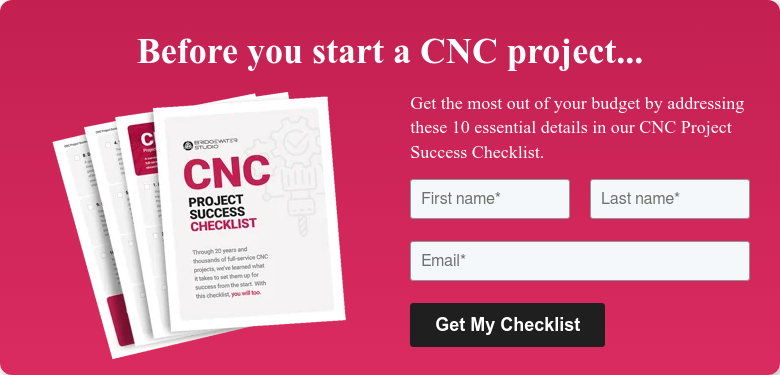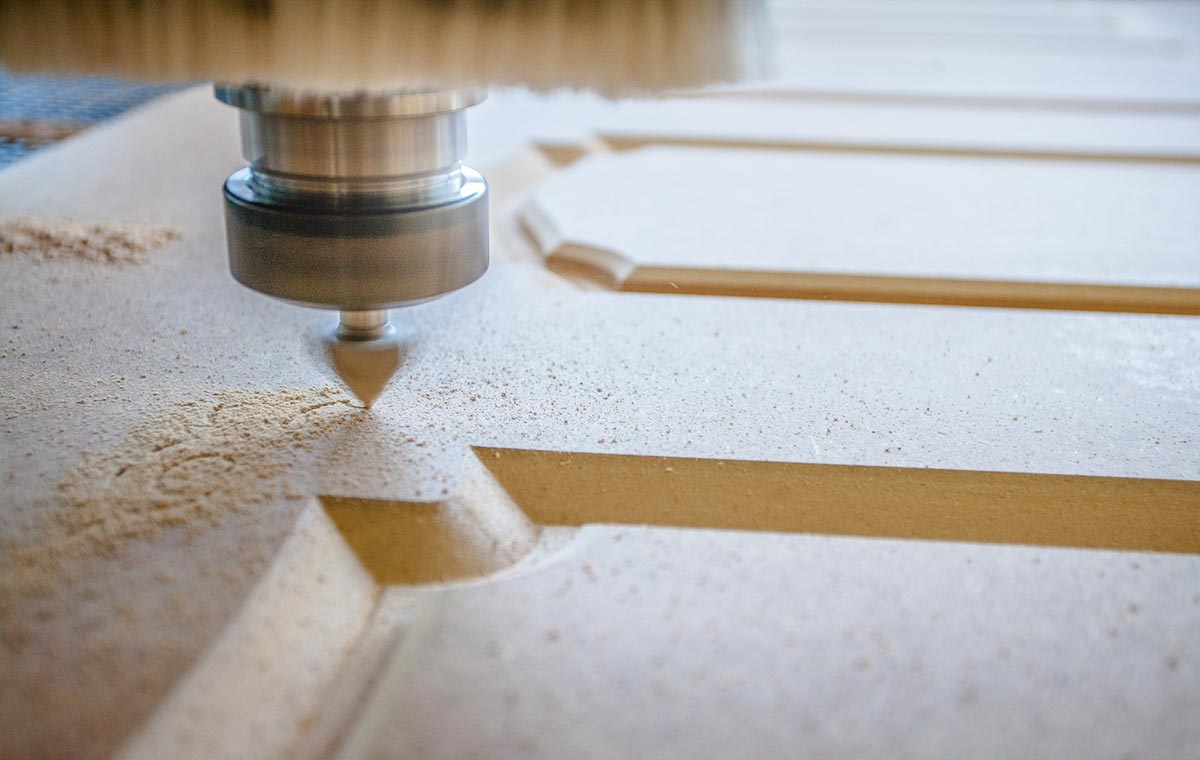3D printing and CNC machining are both modern fabrication technologies that make just about anything possible. From sculptures to art installations, interactive exhibits, themed environments, and more— brands can rely on either method to produce one-of-a-kind experiences that engage and wow audiences.
While CNC machining and 3D printing can both produce similar results, determining which is “better” is a function of many factors specific to each project. Speed, accuracy, materials, and size are just a few of the variables a design and fabrication studio will consider in the planning stages.
In comparing 3D printing vs. CNC machining, which is better? It depends.
In this article, we’ll answer the more appropriate question: When is it best to use CNC machining, and when should 3D printing be used instead?
You’ll learn how studios with full-service design and fabrication capabilities address this question for every project. Once you understand the true benefits of 3D printing versus CNC machining, you’ll be prepared to set your next project up for success from the start.
CNC vs. 3D Printing: Different Fabrication Methods
A 3D printer or a CNC machine will manufacture the same object in two very different ways:
- Additive – Material is glued or sintered together into layers, or else heated into a mixture. 3D printing always uses the additive manufacturing process.
- Subtractive – Material is removed from a block using blades, heat, or pressure. CNC machining equipment always uses the subtractive manufacturing process.
Subtractive manufacturing has been one of the most preeminent manufacturing methods for the past several decades. Introduced in the 1940s, subtractive manufacturing was used as a tool to machine highly complex parts that require optimal precision. Today, it’s used for a wide variety of prototyping, production and assembly line applications.
Additive manufacturing is a newer fabrication process, and is experiencing significant growth due to technology and material advancements. The additive manufacturing process generally produces less waste because it only adds what’s needed versus cutting away from a solid block of material.

When is CNC Machining Better?
CNC machining is typically more effective than 3D printing for:
- Medium-to-large scale relief carving (signs, architectural reliefs, emblems)
- Contour cutting
- Large scale full 3D carving
- Machining metals
- Turning wood
- Precision cutting
- Large sculptures
CNC machining equipment is ideal for a wide variety of materials:
- Ceramics
- Composites
- EPS foam
- HDPU foam
- Metal
- Soft & hard plastics
- Stone
- Wood
CNC machining equipment produces stronger, more durable objects vs. 3D printing. For structural stability, CNC machining is often preferred when fabricating medium-to-large objects, especially if they are low detail.
When is 3D Printing Used?
3D printing can be ideal when you need:
- Rapid prototyping
- Presentation model production
- Fine details & texture reproduction
- Small run mold making
- Jewelry design
- Detailed replications of 3D objects
- Light-to-medium duty functional components like gears, levers and handles
- One-off custom plastic enclosures
3D printing uses the following materials:
- Plastics
- Resins
- Ceramics
3D printing is optimal when materials don’t require the level of strength or heat resistance that the CNC machining process can afford. 3D printing gains an additional advantage by providing more control over the inside of an object. For example, an object can be printed hollow to save on material costs and printing time.
3D Printing vs. CNC Machining: Which is More Precise?
CNC machining has a finer profile-cutting tolerance for positioning features, hole diameters, and other precise measurements. When parts need to perfectly align, this is a top priority.
For reproducing fine surface details, such as textures, 3D printers will have a slight edge over CNC machining equipment. However, variables like size, materials, durability, finish options, and more can easily make CNC machining the better choice.
Which is Faster: 3D Printing vs. CNC Machining?
CNC machining and 3D printing both have advantages and disadvantages when it comes to speed. The fastest method for a particular job will depend on—you guessed it— several factors.
CNC machining requires more setup. The amount of time it takes to program CNC machining equipment can vary widely with each project. However, once programmed, CNC machining is faster than 3D printing for high-volume replications of the same object.
On the flip side, 3D printing requires less setup for each variation. This makes 3D printing faster than CNC machining for projects that may have multiple revisions. 3D printing also generally requires less post-assemblage than CNC machining, which can make 3D printing services more efficient over the course of a project.
Ultimately, the physical size of a project will determine how fast 3D printing is compared to CNC machining. 3D printing is better for smaller elements that require lots of fine details. CNC machining equipment can achieve this same level of detail, but there comes a point where CNC machining is more expensive than 3D printing because of the finer tools required and high degree of programming involved, especially for revisions.
Choosing CNC Machining, 3D Printing, or Both
CNC machining and 3D printing services both have impressive capabilities and can achieve similar results for many design and fabrication projects. In fact, it’s not uncommon to use both processes for a project, with each contributing to optimize build quality and efficiency.
It pays to understand when each method is the better choice for a particular need. Not only will you save time and money, you’ll end up with higher quality—all ingredients for a successful project.
Identifying the right processes, materials, design choices and other factors are all part of a comprehensive planning process that simply can’t be skipped over. Involving an experienced, full-service design and fabrication company as early as possible in a project is the best way to ensure an on-time, on-budget, stress-free experience.
Whether you’re in the ideation phase, have an urgent production need, or just have questions, take 30-minutes to explore your options with Bridgewater Studio and get a free plan customized for your next project.


.png)
.png)
.png)







